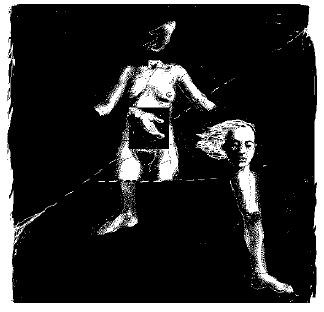Literary Hypertext
A literary hypertext is a literary work created for the digital medium. The best examples marry aspects of digital technology with text to create a reading experience that can't easily be replicated in another  medium. Michael Joyce defines hypertext as "reading and writing in an order you choose where your choices change the nature of what you read" (Joyce, 150). Adrian Miles says that in reading a hypertext "each reader, by their actions, makes and reads a different text, which is a very different proposition to agreeing that we may have different interpretations of the same text" (Miles, 231).
medium. Michael Joyce defines hypertext as "reading and writing in an order you choose where your choices change the nature of what you read" (Joyce, 150). Adrian Miles says that in reading a hypertext "each reader, by their actions, makes and reads a different text, which is a very different proposition to agreeing that we may have different interpretations of the same text" (Miles, 231).
Hypertext literature proposes the link as a major grammatical innovation. Mark Bernstein contemplates links as "the first new punctuation marks to appear in centuries, the most important technical innovation in our literary machinery since the comma." He goes on to argue that "other aspects of electronic writing change print practice at the margins-audio or video illustrations, colour imagery, print-on-demand or electronic distribution-but links change writing itself" (Bernstein, 4).
Hypertext, at least in theory, has been in existence since 1945. Stuart Moulthrop says that it is possible to "identify three waves in the history of hypertext...pioneers like Nelson, Englebart and van Dam originated the concept and built the first experimental systems. A second wave, beginning with the introduction of personal computers and running through the popularization of the Internet, produced widely-distributed systems and the first examination of their uses and implications. The arrival of the World Wide Web opened a third phase, characterised less by wild experimentation and utopian ideas than refinement of existing technologies....the third phase concerns itself with hypertext as a reality, not novelty: with what Dalgaard calls the 'archive,' a communication environment in which virtually all texts are exposed to automated search, retrieval and hypertextual reference" (Moulthrop, 249).
From the point of view of libraries and special collections, hypertexts are not only interesting literary works but also fascinating examples of early electronic books (closed hypertexts on CD-ROM may be regarded as the first true electronic books, i.e. books that don't simply look to reproduce print books in electronic formats, but instead offer new ways of putting together texts and consequently new ways of reading them). Seen in this way, early hypertexts may be regarded as e-incunabula.
The QEII's Special Collections is working to develop a collection of hypertexts literature. Beginning with classics, written during Moulthrop's "second wave" (see above), and including Michael Joyce's "Afternoon, a story," Judy Malloy's "Its Name Was Penelope," Stuart Moulthrop's "Victory Garden," and Shelley Jackson's "Patchwork Girl." We are particularly interested in collecting the work of Canadian hypertext writers. Recently, Memorial University Libraries became the permanent home for Newfoundlander writer Don Austin's hypertext prose poem ned after snowslides.
Please see the following Hypertext critical bibliography for a list of critical books and articles about hypertext.
All the works quoted above may be found in Bernstein, Mark, and Diane Greco. Reading Hypertext. Watertown, MA: Eastgate Systems, 2009.
For more information about the collection, please contact librarian Patrick Warner at the QEII's Archives and Special Collections.
